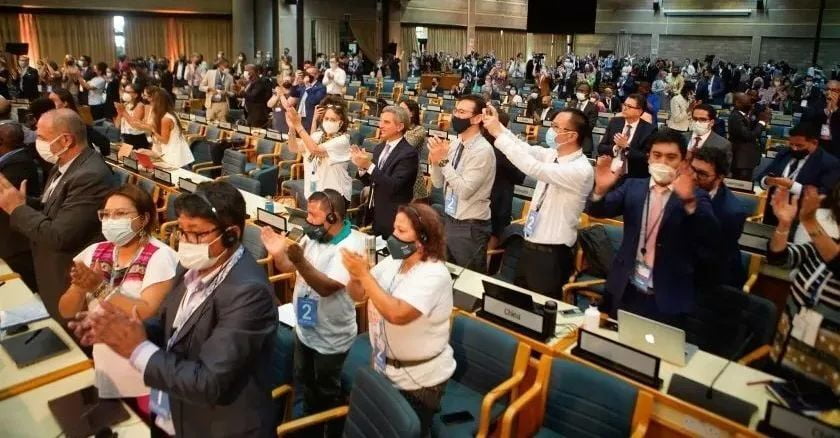The world's first "plastic restriction" is coming
One of the most important topics of the resumed fifth session of the United Nations Environment Assembly, to be held from February 28 to March 2, 2022, will be combating global plastic pollution, with governments around the world discussing the development of the first global treaty to tackle plastic pollution.
On March 2 local time, heads of state, environment ministers and other delegates from 175 countries adopted a historic resolution at the resumed fifth session of the United Nations Environment Assembly (UNEA-5.2) in Nairobi: to end plastic pollution and reach an internationally legally binding agreement by 2024. The resolution takes into account the entire life cycle of plastics prevention and control, including their production, design and disposal.

At present, environmental protection has become the main theme of global development, and there are numerous environmental protection policies at home and abroad.
Biodegradable plastics take the limelight again
Under the main theme of environmental protection, biodegradable plastic, as a key material to replace existing plastics, has undoubtedly become the direction of public hype again.
Biodegradable plastic is actually the ideal alternative to solve white pollution. Biodegradable is the main biodegradable plastic species, and the biodegradable plastic that we usually hear refers to biodegradable plastic, which is valued by all parties because it can fundamentally solve the problem of white pollution.
What is biodegradable plastic?
Degradable plastics are a class of plastics whose properties can meet the requirements of use, and whose properties remain unchanged during the shelf life, and which can degrade into environmentally friendly substances under natural environmental conditions after use. Therefore, they are also called environmentally degradable plastics.
A variety of new plastics are available: photodegradable plastics, biodegradable plastics, photo/oxidative/bio-comprehensive degradable plastics, CO2-based biodegradable plastics, and thermoplastic starch resin degradable plastics.
There are two main areas of use for degraded plastics.
First, the original use of ordinary plastics in the field. In these areas, used or post-consumer plastics that are difficult to collect can be harmful to the environment, such as agricultural land film and disposable plastic packaging.
The second is the field of replacing other materials with plastic. The use of degradable plastics in these fields can bring convenience, such as ball spikes for golf courses and seedling fixing materials for tropical rainforest plantations.

